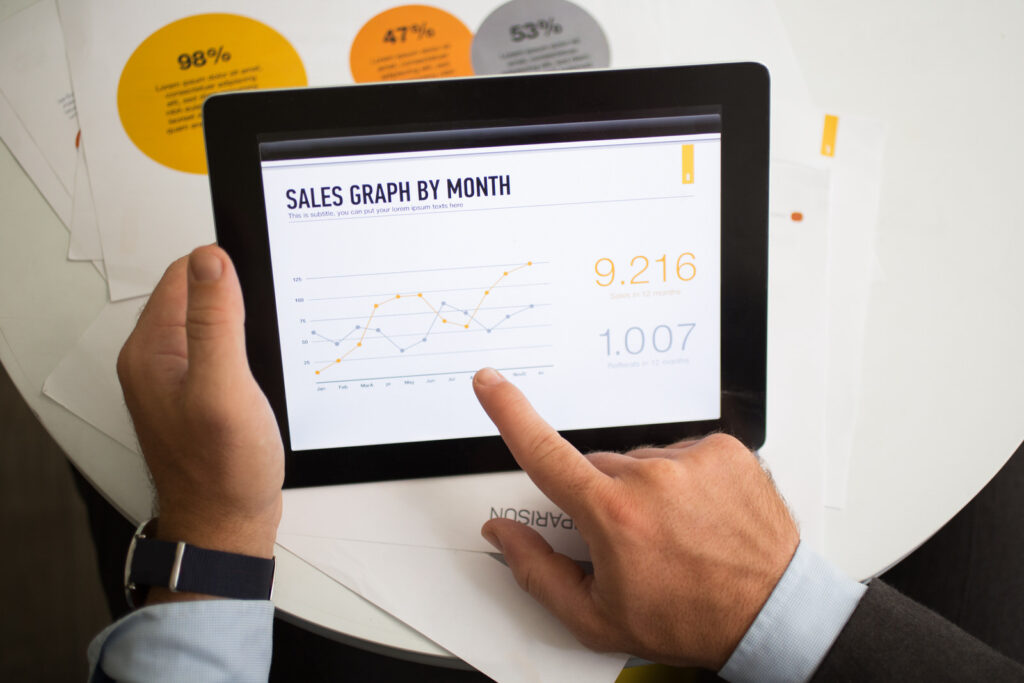20 Basic E-commerce KPIs to Track in 2025
- January 1, 2025
-
Melek Aydemir
E-commerce refers to the process of buying and selling products and services through digital platforms. As e-commerce becomes increasingly important in today’s business landscape, tracking the right metrics is critical to evaluating performance and making informed decisions. In this article, we will discuss 20 essential KPIs (Key Performance Indicators) that businesses should monitor in 2025 to measure and improve their e-commerce performance.
18 Basic E-commerce KPIs to Track in 2025

E-commerce is a business model for buying and selling products or services over the internet. This model offers businesses the opportunity to reach a wide customer base and increase their sales. The success of e-commerce is directly related to monitoring the right KPIs (Key Performance Indicators).
The 20 basic e-commerce KPIs used to measure e-commerce success that should be followed in 2025 are as follows:
1. Conversion Rate: This KPI measures how many of your website visitors actually make a purchase. It is a key indicator in determining the effectiveness of your e-commerce site.
2. Average Order Value (AOV): The average amount of purchases made by a customer. A high AOV usually indicates effective cross-selling and up-selling strategies.
3. Cart Abandonment Rate: The rate at which customers fill the shopping cart and leave the site without paying. This KPI is an important metric to consider to improve the user experience.
4. Customer Acquisition Cost (CAC): Measures the total cost to acquire a new customer. A lower CAC is the result of more efficient marketing and sales strategies.

5. Return on Ad Spend (ROAS): Indicates how much revenue is generated for every dollar spent on advertising. It is used to evaluate the efficiency of paid marketing efforts.
6. Net Promoter Score (NPS):NPS measures the likelihood of customers recommending your business to others. A high NPS is an indicator of customer satisfaction and loyalty.
7. Bounce Rate:Bounce rate shows the percentage of visitors who leave the site without taking any action after entering. A low bounce rate is a sign of engaging content and user-friendly design.
8.Website Traffic: Measures the number of users visiting your website. Increased traffic shows the success and marketing effectiveness of your e-commerce strategy.
9. Customer Satisfaction Score (CSAT): A KPI that measures the overall satisfaction of customers. A high CSAT is indicative of a good customer experience.

10. Email Open Rate: Used to measure how many of the emails sent are opened. A high open rate is an indicator of effective email marketing.
11. Customer Lifetime Value (CLV):CLV measures the total revenue a customer generates for your business. It is used to determine the importance of customer loyalty and repeat purchases.
12. Page Views:The number of page views indicates how many pages visitors browse on your site. High page views emphasize the importance of providing engaging and relevant content.
13. Percentage of Mobile Traffic:Mobile traffic percentage refers to the percentage of visitors coming to your site from mobile devices. Mobile compatibility is critical for a successful e-commerce site today.

14. Sales Revenues: Sales revenue refers to the total revenue generated in a given period. Revenue growth is a result of successful sales strategies and marketing campaigns.
15. Repurchase Rate: Repurchase rate shows the percentage of customers who make repeat purchases. A high repurchase rate indicates customer satisfaction and loyalty.
16. Refund Rate: The refund rate shows the percentage of purchased products that are returned. A low return rate is a sign of customer satisfaction and product quality.
17. Average Response Time: Average response time shows how quickly customer service responds to inquiries or problems. A short response time increases customer satisfaction.
18. Inventory Turnover Rate: Inventory turnover shows how fast inventories are sold and replenished. High inventory turnover is a sign of effective inventory management.
19. Churn Rate: Indicates the percentage of customers who stop purchasing from your business over a specific period. A low churn rate means you are successfully retaining customers.
20. Cost of Goods Sold (COGS): Refers to the direct costs of producing or purchasing the goods you sell. It is used to calculate gross profit and improve pricing strategies.
How to Measure Performance in E-commerce?
Measuring e-commerce performance is possible by identifying the right KPIs and tracking them regularly. By monitoring these KPIs, businesses can identify where they are strong and where they need improvement. Also, performance measurement guides strategic decision-making and helps businesses gain a competitive advantage.
The following steps can be followed for performance measurement:
Goal Setting: Defining the goals and objectives of the business.
Using the Right Tools: Collecting data using Google Analytics, CRM systems, and other e-commerce analysis tools.
Regular Reporting: Regular analysis and reporting of performance data.
Improvement Strategies: Development and implementation of improvement strategies in line with the data obtained.
In 2025, the key to e-commerce success is to monitor the right KPIs and measure performance regularly. The 20 key KPIs we listed above offer powerful tools to evaluate your e-commerce performance and improve your strategies. By regularly tracking these KPIs, you can ensure that your business becomes more successful in the digital marketplace.
Contact us
Fill out the form for detailed information and demo account, let us call you.
